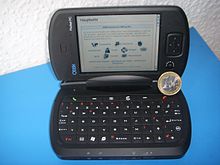|
Создан карманный персональный компьютер на современном «железе» и с Windows 11. Это полноценный ПК с современной ОС и возможностью запускать настольные программы. У него масса интерфейсов, включая четыре USB 3.0 и два HDMI, что позволяет с легкостью превратит его из портативного ПК в стационарный.
Карманные компьютеры вернулись
Японская компания Gloture решила оживить давно забытый класс устройств – карманные персональные компьютеры (КПК). Она создала наладонник – полноценный компьютер NanoPC со множеством интерфейсов и полноценной Windows 11 «из коробки», пишет портал TechSpot, за счет чего на нем можно запускать почти любые настольные программы.
Карманным NanoPC называется не просто так – это действительно ультрапортативное решение, которое легко уместится в кармане, но, в отличие от современных смартфонов, у него нет вытянутого экрана, адаптированного под ленты соцсетей или ролики на YouTube – дисплей компьютера имеет приближенные к «настольному» формату (16:9) пропорции.
Также NanoPC способен запускать многие классические видеоигры под Windows – это не портативная игровая консоль, так как в устройстве нет дискретной графики, но с большинством игр старше 10-12 лет этот компьютер должен справиться. Например, ему точно хватит сил для запуска Quake II и, возможно, Doom 3.
Для карманного компьютера большой карман не нужен
КПК как класс устройств были на пике популярности в начале XXI века. Устройства на Windows, при всем их многообразии, были менее востребованы в сравнении с КПК на Palm OS. Массово отказываться от карманных компьютеров потребители стали в 2007 г., когда вышел самый первый iPhone, а релиз в 2008 г. ОС Android и первых смартфонов под ее управлением лишь ускорил этот процесс.
К моменту выхода материала NanoPC продавался исключительно на территории Японии – Gloture не спешила выпускать его за пределами этой страны. Рекомендуемая цена новинки составляет 84,7 тыс. иен или около $585 или 57,3 тыс. руб. по курсу ЦБ на 11 августа 2023 г. Основную нагрузку на кошелек в случае NanoPC оказывает его оригинальность на фоне однотипных смартфонов – продвинутого «железа» у него нет.
NanoPC получился очень портативным для своего класса и своих возможностей – его размеры составляют всего 142х92 мм. Для сравнения, габариты Apple iPhone 13 Pro – 147х72 мм в длину и ширину соответственно. Слабое место NanoPC в этом плане – это его толщина на уровне 18 мм.
«Лицо» карманного компьютера
Разработчики NanoPC не стали идти на поводу у современных трендов и даже не попытались уменьшить рамки по периметру экрана. Возможно, это как-то связано с внутренней компоновкой КПК, но размеры его от этого заметно выросли.
Иван Чернов, UserGate — об ответственности ИБ-вендоров перед рынком
Безопасность

Сам экран – это IPS-матрица с диагональю 5,5 дюйма, то есть в этом плане он меньше в сравнении с нынешними смартфонами, но визуально кажется более крупным за счет более менее вытянутой формы.
Портретный и ландшафтный режимы — в NanoPC доступны оба
Разрешение экрана NanoPC – 1280х720 пикселей или HD. Такой разрешающей способностью могли похвастаться смартфоны образца середины прошлого десятилетия – сейчас даже недорогие модели поддерживают разрешение Full HD+. Частота обновления у экрана стандартная – 60 Гц, как и у подавляющего большинства настольных мониторов.
Что делает компьютер компьютером
Внутри NanoPC на системной плате распаяно вполне компьютерное «железо» – здесь нет никаких ARM-процессоров, хотя Windows 11 умеет работать с некоторыми из них. Разработчики отдали предпочтение классической архитектуре х86 и, в частности, процессору Intel Celeron J4125, который был выпущен в конце 2019 г. и производился по 14-нанометровому техпроцессу. По современным меркам это очень слабый, но в то же время очень холодный CPU – его уровень TDP не превышает 10 Вт. Intel Celeron J4125 выдает частоту до 2,7 ГГц на четырех ядрах, имеет встроенную графику UHD 600 (до 750 МГц), но лишен кэша третьего уровня и поддержки многопоточности (Hyper Threading здесь нет).
Как смартфон, только функциональнее
С процессором напрямую связана оперативная память LPDDR4 объемом 8 ГБ, и это максимальный поддерживаемый объем для данного CPU. Вместо полноценного SSD-диска в NanoPC установлена сравнительно медленная флеш-память еММС на 128 ГБ, поддержка твердотельных накопителей не заявлена.
Apple есть чему поучиться
Самая главная отличительная особенность нового японского КПК – это не просто факт его существования в 2023 г., в эпоху смартфонов и планшетов, и даже не наличие в нем полноценной настольной ОС. Его главная особенность – это колоссальный набор интерфейсов, и Apple, которая в последние годы сильно экономит на разъемах в своих базовых MacBook, есть чему поучиться.
В крошечном корпусе NanoPC разработчики уместили сразу четыре порта USB 3.0, пару HDMI для подключения к двум большим экранам с разрешением до 4К, один USB-C, гигабитный Ethernet и даже кард-ридер для накопителей microSD. Из беспроводных модулей здесь имеются Bluetooth 5.2 и Wi-Fi 6, он же Wi-Fi 802.11ac.
Единственное, чего не хватает NanoPC — это радиомодуля
Питается вся эта электроника от аккумулятора емкостью 2500 мАч. По современным меркам это совсем немного, но в NanoPC нет энергоемких компонентов. Однако производитель все равно не стал раскрывать время автономной работы этого КПК.
- Обзор российского электромобиля АТОМ — машина-гаджет, первый тест в России
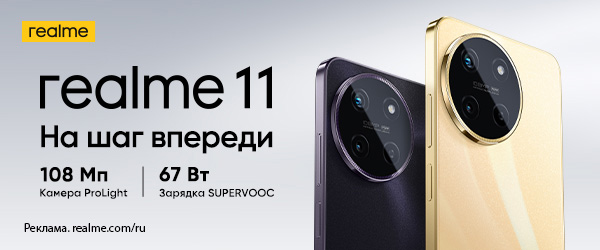
Для работы проектов iXBT.com нужны файлы cookie и сервисы аналитики.
Продолжая посещать сайты проектов вы соглашаетесь с нашей
Политикой в отношении файлов cookie
Необходимость иметь в кармане устройство с полноценной десктопной операционной системой может быть вызвана самыми разными причинами, от настройки различного оборудования и работы со специфическим ПО до приверженности к определенным видеоиграм, которых нет на мобильных платформах. Предлагаю рассмотреть наиболее компактные девайсы на ОС Windows, что можно найти на AliExpress. В подборке представлены только «самостоятельные» устройства с собственным дисплеем: современные мини-ПК могут быть ещё меньше в размерах, но это преимущество нивелируется габаритами внешнего монитора и периферии для управления.
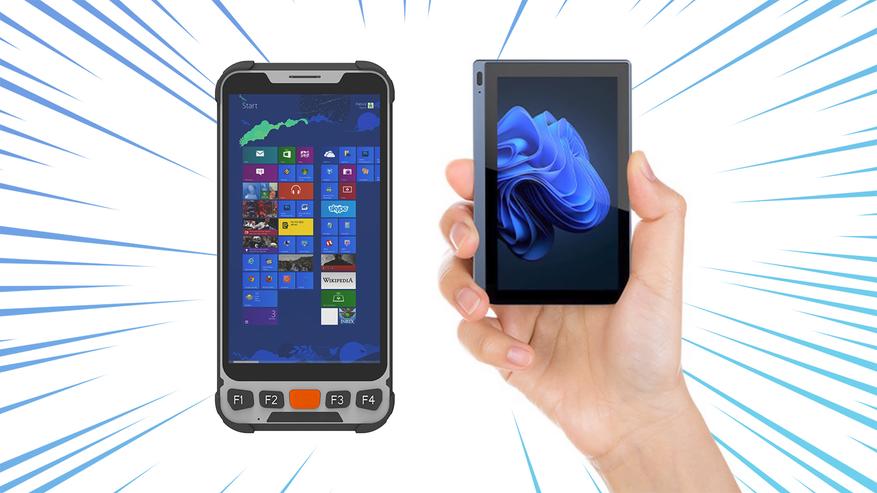
Higole 1 Pro
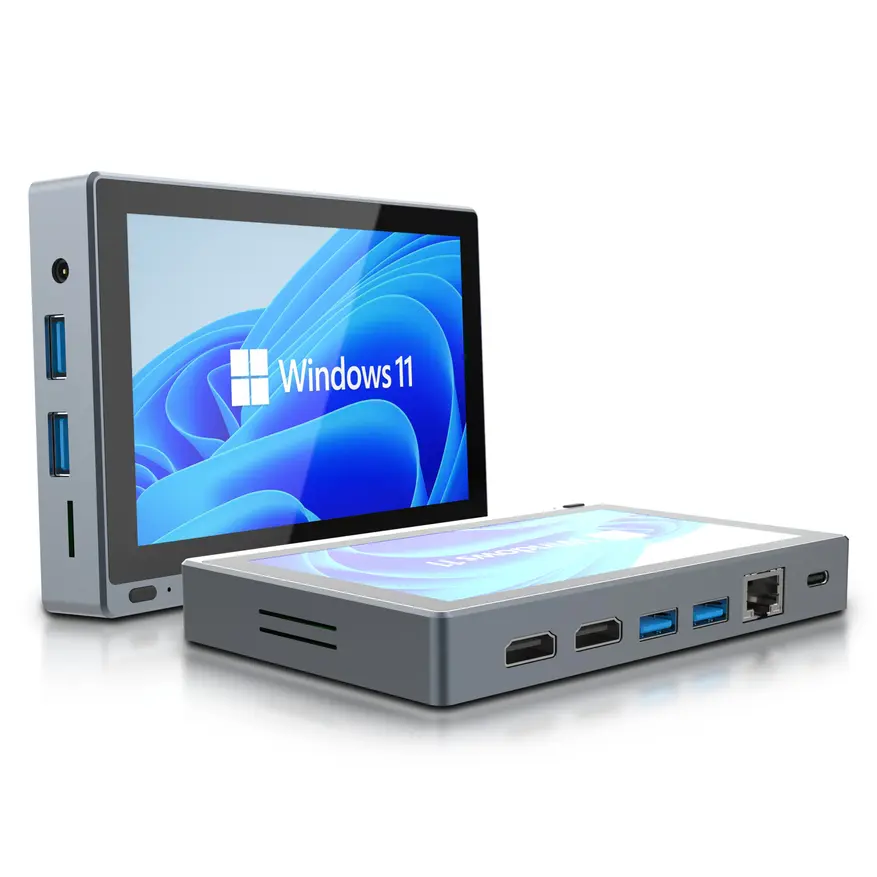
Миниатюрный планшет от Higole с предустановленной Windows 11 Pro на борту обладает сенсорным экраном с диагональю 5.5 дюйма с разрешением 720 x 1280 пикселей. При габаритах 142 x 91.2 x 17.8 мм гаджет весит 200 г.
Внутри установлен 4-ядерный процессор Intel Celeron J4125 с тепловыделением в 10 Вт, что позволяет устройству нормально работать без активного охлаждения. Аккумулятор на 2500 мАч обеспечивает ~ 3 часа автономной работы.
Rugline RT-I55H
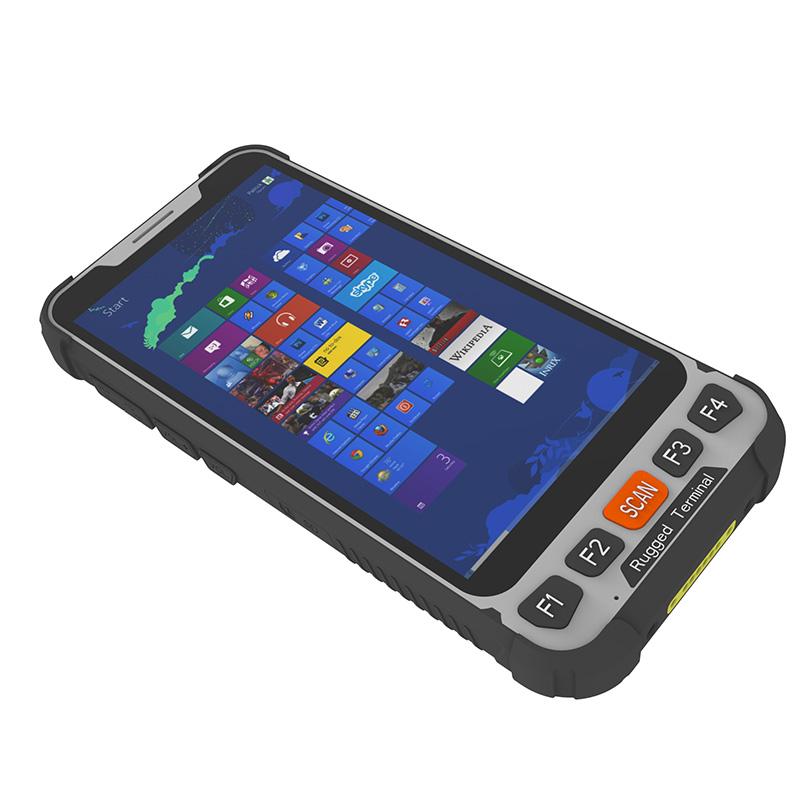
Данное устройство на Windows 10 также оснащено 5.5-дюймовым сенсорным дисплеем, но разрешение здесь уже Full HD. У RT-I55H намного меньше возможностей для подключения периферии (только один разъем USB 3.0 и один Micro USB), зато помимо WiFi и Bluetooth есть поддержка GPS, NFC + имеется слот для SIM-карт. Опционально девайс может комплектоваться сканером штрихкодов.
В качестве процессора здесь используется 4-ядерный Intel Atom x5-Z8350 с 4 ГБ ОЗУ и флеш-накопителем на 64 ГБ. Корпус устройства защищен от попадания пыли и воды в соответствии со стандартом IP65.
Anbernic Win600
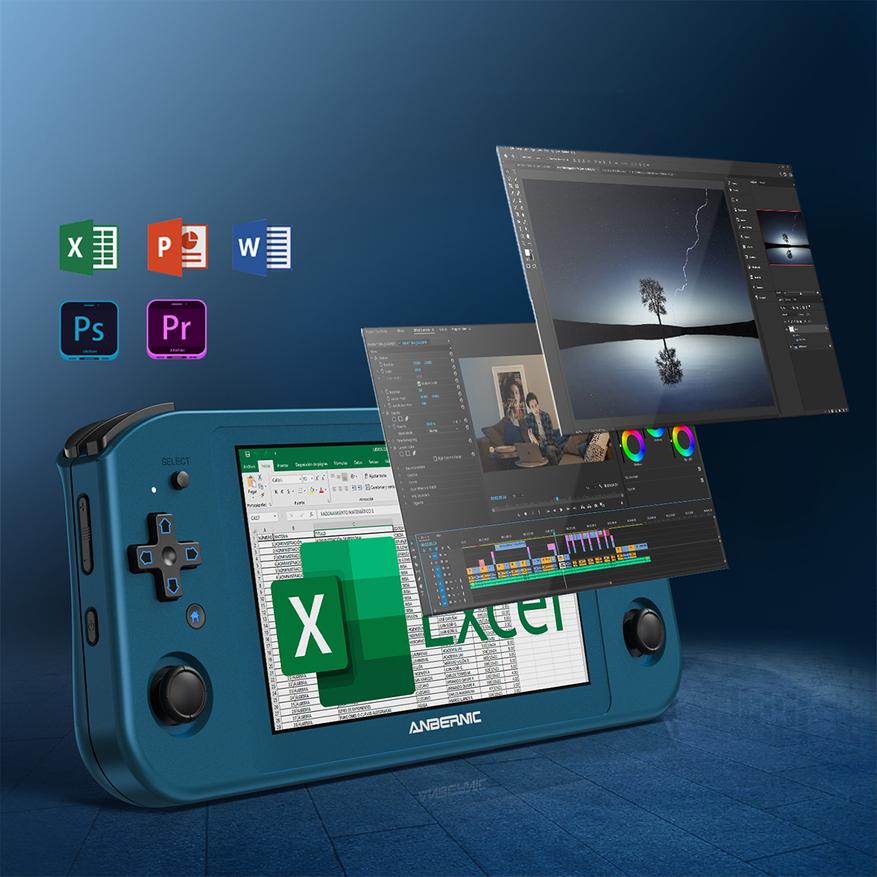
Anbernic известна в первую очередь как производитель ретро-консолей на Linux и Android, а модель Win600 стала их первым устройством на Windows 10. Диагональ экрана — 5.94 дюйма, разрешение — 720 x 1280 точек.
«Сердцем» системы служит процессор AMD Athlon 3020e либо 3050e. Объем оперативной памяти — 8 либо 16 ГБ. Благодаря наличию портов HDMI и Type-C (с поддержкой DisplayPort over USB-C) можно подключить сразу 2 внешних монитора. Консоль весит 490 г и имеет размеры 236 x 103 x 22 мм.
GPD MicroPC
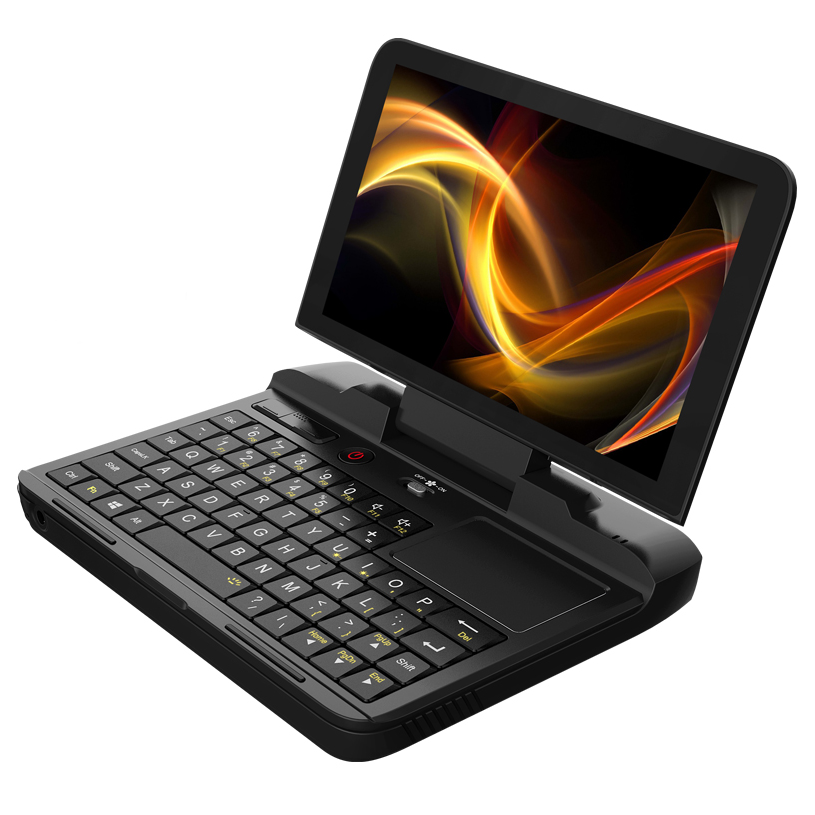
Диагональ дисплея GPD MicroPC — всего 6 дюймов, и тем не менее это полноценный ноутбук на Windows 10 Pro с тачпадом, активным охлаждением и богатым набором интерфейсов. В частности, имеется даже разъем RS-232.
Размеры MicroPC в сложенном виде — 153 x 113 x 23.5 мм при массе в 440 г. Устройство оснащается 4-ядерным процессором Intel Celeron N4120, SSD на 256 ГБ и 8 ГБ ОЗУ. На задней крышке есть отверстия для крепления к кронштейну.
GPD WIN 4
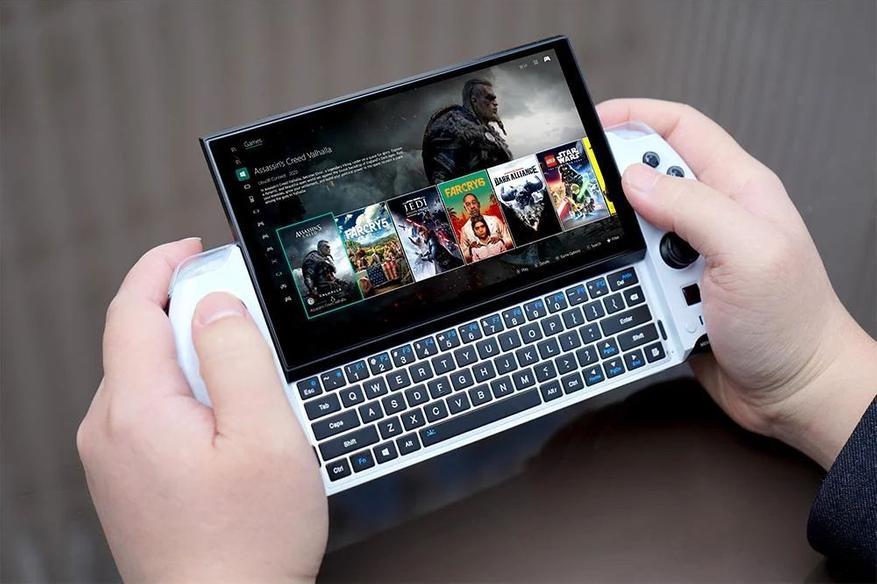
В сложенном виде GPD WIN 4 внешне сильно напоминает консоль PS Vita, которую отправили на лето к бабушке в деревню. И хотя WIN 4 по всем измерениям превосходит консоль от Sony, но это не мешает данному устройству быть одним из самых портативных устройств на Windows 11, да ещё и с физической клавиатурой.
По цене WIN 4 можно сравнить с полноразмерными китайскими игровыми ноутбуками, но объясняется это производительной начинкой: сюда установили 8-ядерный AMD Ryzen 6800U со встроенным GPU Radeon 680M на архитектуре RDNA2, а также твердотельный накопитель на 1 ТБ и 16 ГБ ОЗУ. Опционально предлагается небольшой внешний модуль для установки SIM-карт.
Pipo W7
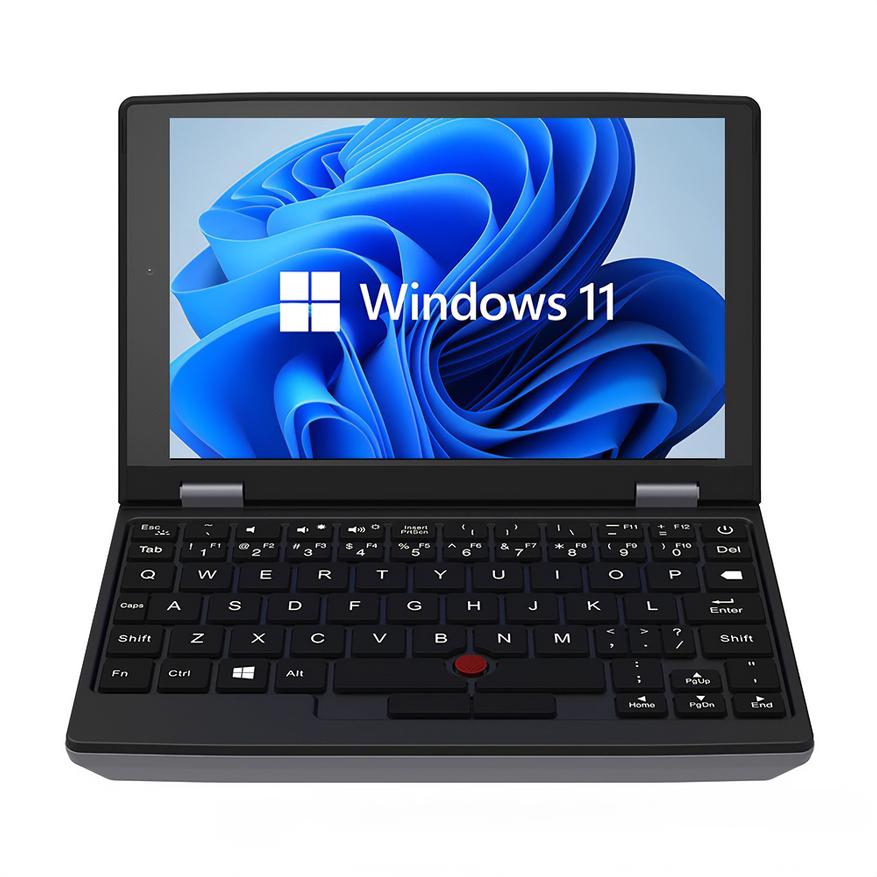
Этот нетбук не может похвастаться таким обилием интерфейсов, как GPD MicroPC, зато при значительно более низкой цене он предлагает больший объем оперативной памяти (12 ГБ), а среди доступных конфигураций есть варианты с SSD объемом до 1 ТБ включительно.
Расплачивается за это W7 несколько меньшей портативностью: диагональ экрана на дюйм больше, чем у MicroPC, а размеры устройства в сложенном состоянии — 185 x 141 x 20 мм при весе в 700 г.
One-Netbook A1 Pro
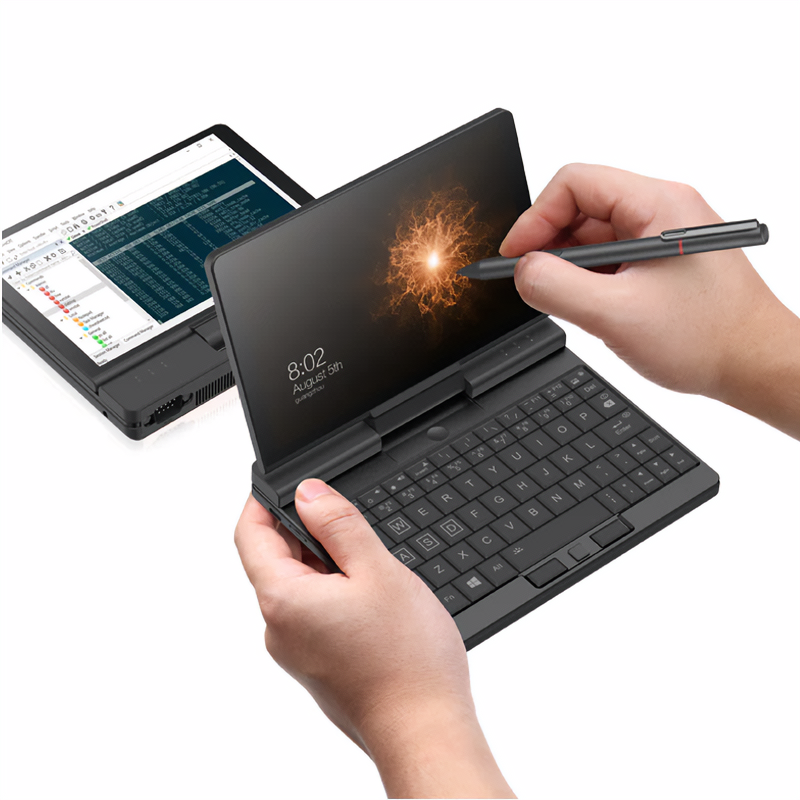
Миниатюрный ноутбук от One-Netbook может похвастаться разъемом RS-232 и 7-дюймовым экраном с поддержкой работы с цифровым пером (доступно в качестве опции) и возможностью вращения на 180°.
Доступна только одна конфигурация по ОЗУ и ПЗУ — 16 ГБ DDR4 и 512 ГБ SSD, зато на выбор предлагается 2 процессора — Intel Core i3-1110G4 (2 ядра/4 потока) и Core i5-1130G7 (4 ядра/8 потоков).
Сейчас на главной
Новости
Публикации
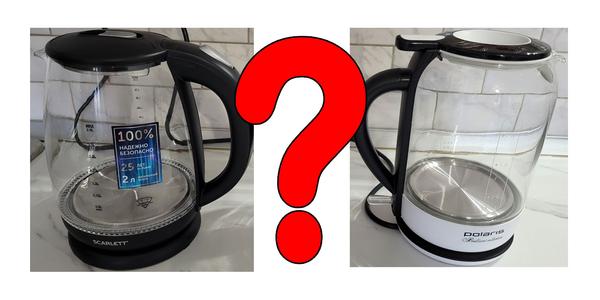
Чайником Polaris PWK 1753CGL Brilliant Collection я активно пользуюсь дома уже около года, а когда речь зашла о чайнике на дачу — решил немного сэкономить и заказал Scarlett SC-EK27G70….
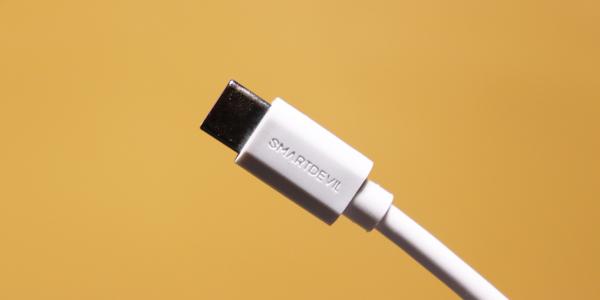
Со SmartDevil я уже знаком несколько лет, поскольку они выпускают крайне качественные и бюджетные аксессуары для смартфонов, в том числе и стекла, на которые я и сам перешел с Nillkin. Выпуск…

Так
сложилось, но многие считают, что Англия (England),
Великобритания (Great Britain)
и Соединенное Королевство (United
Kingdom) это практически одно и то же понятие и используют «в обиходе»…

Огромное количество людей отправляясь в отпуск
направляются в теплые края и страны, чтобы нежиться на берегу моря, океана, и
на террасах у бассейна. В мире существует огромное количество самых…
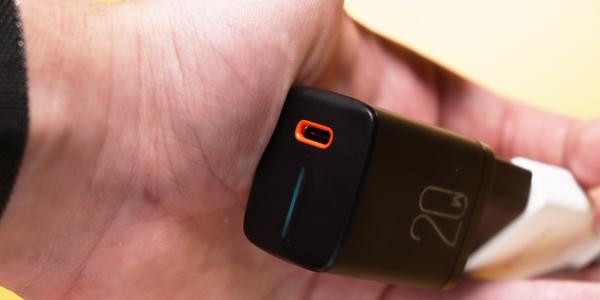
Ну вот подобрался и к бренду IQOO, а точнее к их зарядным устройствам. Бренд не самый популярный, но устройства компании выделяются самобытным дизайном и гуманным ценником. Ну что же,…

После массового появления автомобилей мир долго шел к стандартизации регулирования их движения и повышению безопасности на дорогах. Теперь дорожными знаками опытного автомобилиста не удивить. Хотя…
From Wikipedia, the free encyclopedia
«P/PC» redirects here. For other uses, see PPC.
A Pocket PC (P/PC, PPC) is a class of personal digital assistant (PDA) that runs the Windows Mobile or Windows Embedded Compact operating system that has some of the abilities of modern desktop PCs. The name was introduced by Microsoft in 2000 as a rebranding of the Palm-size PC category. Some of these devices also had integrated phone and data capabilities, which were called Pocket PC Phone Edition. Windows «Smartphone» is another Windows CE based platform for non-touch flip phones or dumber phones.
As of 2010, thousands of applications existed for handhelds adhering to the Microsoft Pocket PC specification, many of which were freeware.[1][better source needed] Microsoft-compliant Pocket PCs can be used with many add-ons such as GPS receivers, barcode readers, RFID readers, and cameras.
In 2007, with the advent of Windows Mobile 6.0, Microsoft dropped the name Pocket PC in favor of a new naming scheme:[2]
- Windows Mobile Classic (formerly Pocket PC): devices without an integrated phone;
- Windows Mobile Professional (formerly Pocket PC Phone Edition): devices with an integrated phone and a touch screen;
- Windows Mobile Standard (formerly Smartphone): devices with an integrated phone but without a touch screen.
Pocket PC was replaced by Windows Phone in 2010 but even after versions were released based on the Windows NT kernel were ultimately unable to compete with the iPhone of 2007 and Android phones and interested waned in Pocket PC’s without phones.
History[edit]
The Pocket PC was an evolution from prior calculator-sized computers. Keystroke-programmable calculators which could do simple business and scientific applications were available by the 1970s. In 1982, Hewlett Packard’s HP-75 incorporated a 1-line text display, an alphanumeric keyboard, HP BASIC language and some basic PDA abilities. The HP 95LX, HP 100LX and HP 200LX series packed a PC-compatible MS-DOS computer with graphics display and QWERTY keyboard into a palmtop format. The HP OmniGo 100 and 120 used a pen and graphics interface on DOS-based PC/GEOS, but was not widely sold in the United States. The HP 300LX built a palmtop computer on the Windows CE operating system.
Palm-size PC (PsPC) was Microsoft’s official name for Windows CE PDAs that were smaller than Handheld PCs by the lack of a physical keyboard. The class was announced in January 1998 originally as «Palm PC» which provoked a lawsuit by Palm Inc., and the name changed soon afterwards to Palm-size PC before release.[3] These devices were similar to the Handheld PC and also ran Windows CE, however this version was more limited and lacked Pocket Microsoft Office, Pocket Internet Explorer, ActiveX and some other tools.[4] Its main competitor was the PalmPilot and Palm III.[5] According to the specification, Palm-size PCs use SuperH SH3 processors and MIPS architecture. The term «palm-sized PC» was also used as a generic term of similar such devices that are not necessary connected to Microsoft, such as the PalmPilot.
Microsoft’s Handheld PCs and Palm-size PCs did not gain much success in the markets compared to Palm, with users complaining the Windows CE software were hard to use and the devices themselves were thick.[6] On April 19, 2000, Microsoft introduced Pocket PC with a revamped interface and to better compete against the popular Palm devices. The Pocket PC was based on the all new version 3.0 of Windows CE. HP, Casio and Compaq were the first OEMs with Pocket PC devices in 2000.[7][8] The familiar desktop Windows UI from Palm-size PCs was removed in favor of a more tailored interface on Pocket PCs.[4]
According to Microsoft, the Pocket PC is «a handheld device that enables users to store and retrieve e-mail, contacts, appointments, tasks, play multimedia files, games, exchange text messages with Windows Live Messenger (formerly known as MSN Messenger), browse the Web, and more.»[9]
Prior to the release of Windows Mobile 2003, third-party software was developed using Microsoft’s eMbedded Visual Tools, eMbedded Visual Basic (eVB) and eMbedded Visual C (eVC).[10] eVB programs can usually be converted fairly easily to NS Basic/CE.[11] or to Basic4ppc.
In 2007 the Pocket PC name was dropped altogether. The Pocket PC Phone Edition became Windows Mobile Professional; the Smartphone became Windows Mobile Standard; and the classic phone-less Pocket PC (which by now had become a niche) became Windows Mobile Classic.[12]
The Pocket PC/Windows Mobile OS was superseded by Windows Phone on February 15, 2010, when the latter was announced at Mobile World Congress that year. No existing hardware was officially supported for a Windows Phone 7 upgrade. Additionally, not a single one of the thousands of apps available for Windows Mobile would run unaltered on Windows Phone.
Specification[edit]
From a technical standpoint, «Pocket PC» is a Microsoft specification that sets various hardware and software requirements for mobile devices bearing the «Pocket PC» label.
For instance, any device which is to be classified as a Pocket PC must:
- Run Microsoft’s Windows Mobile, Pocket PC edition
- Come bundled with a specific suite of applications in ROM
- Note: the name Windows Mobile includes both the Windows CE operating system and a suite of basic applications along with a specified user interface
- Include a touchscreen
- Include a directional pad or touchpad
- Include a set of hardware application buttons
- Be based on an ARMv4 compatible, Intel XScale (ARMv5), MIPS or SH3 CPU. (As of the Pocket PC 2002 specification, ARM-based CPUs are required.)
Operating system versions[edit]
Windows Mobile 6.5[edit]
The first Windows Mobile 6.5 device was first shown in September 2009. Leaked ROMs surfaced in July 2009 for specific devices.[13] The generic ROM images for Mobile 6.5 are also available as part of the officially distributed and freely downloadable development kit.[14]
Several phones running Windows Mobile 6.1 can be updated to Windows Mobile 6.5.[15]
Windows Mobile 6.1[edit]
Microsoft’s Windows Mobile 6.1 was announced on April 1, 2008, and introduced instant messaging-like texting.[16] Windows Mobile 6.1 was built upon Windows CE 5.
Windows Mobile 6[edit]
Microsoft’s Windows Mobile 6, internally code-named ‘Crossbow’, was officially released by Microsoft on February 12, 2007. Mobile 6 was still based on Windows CE 5 and was effectively just a face-lift of Windows Mobile 5. With Mobile 6 also came Microsoft’s new naming conventions and devices were no longer called Pocket PCs: devices with no phone abilities were named Windows Mobile Classic, and devices with phone abilities were named Windows Mobile Professional.
Windows Mobile 5[edit]
Windows Mobile 5 for Pocket PC was based on Windows CE 5 and contained many fixes and improvements over Windows Mobile 2003.
Pocket PCs running prior versions of the operating system generally stored user-installed applications and data in RAM, which meant that if the battery was depleted the device would lose all of its data. Windows Mobile 5.0 solved this problem by storing all user data in persistent (flash) memory, leaving the RAM to be used only for running applications, as it would be on a desktop computer. As a result, Windows Mobile 5.0 Pocket PCs generally had more flash memory, and less RAM, compared to earlier devices.
Windows Mobile 2003[edit]
Windows Mobile 2003 consisted of the Windows CE.NET 4.2 operating system bundled with scaled-down versions of many popular desktop applications, including Microsoft Outlook, Internet Explorer, Word, Excel, Windows Media Player, and others.
Windows Mobile 2003 Second Edition added native landscape, square screen and VGA support as well as other fixes and changes to those features already present in the original release of Windows Mobile 2003.
Windows CE 3.0[edit]
Pocket PC 2000[edit]
Pocket PC 2000 was launched April 2000, and ran Windows CE 3.0. Pocket PC 2000 featured a mobile version of Microsoft Office, a chief feature being the ability to password-protect Excel files.
Pocket PC 2002[edit]
Pocket PC 2002 was launched October 2001, and was powered by Windows CE 3.0, as with its predecessor. Some Pocket PC 2002 devices were also sold as «Phone Editions», which included cell phone functionality in addition to the PDA abilities.
Vendors[edit]
Before the Pocket PC brand was launched, there were other Windows-based machines of the same form factor called Palm-size PCs. These devices ran Windows CE 2.0–2.11 and had an interface that was similar to the then-current desktop versions of Windows like Windows 95. The first of these was the Everex Freestyle, also known as HTC Kangaroo, from 1998.[17] Other examples include Casio Cassiopeia E-10/E-11, Compaq Aero 1500/1520, Philips Nino and HP Jornada 420/430.
Pocket PCs were manufactured and sold by several different companies; the major manufacturers include HP (under the iPAQ and now defunct Jornada brands), Toshiba, Acer, Asus, Dell (under the now defunct Axim brand), Fujitsu Siemens, E-TEN, HTC, and ViewSonic. In mid-2003, Gateway Computers and JVC announced they would release Pocket PCs, but the projects were discontinued before a product was released. Prices in 2003 ranged from around US$800 for the high-end models, some of which are combined with cell phones, to $200 for low-end models. A $100–$200 model was rumored to be released within 2004 or early 2005, although the lowest price for a just-released Pocket PC never went under $300. Many companies ceased to sell PDA’s by 2003–2004 because of a declining market. Major companies such as Viewsonic and Toshiba stopped producing new Pocket PCs.
Companies like O2, T-Mobile and Orange were marketing Pocket PCs that have integrated mobile telephony (smartphones). All users have to do is put in the SIM card and follow the wizard, to put their SIM contacts in the address book. An example is O2’s Xda, or T-Mobile’s MDA Compact. Both of these devices, while bearing the phone operator’s logo, are manufactured by the dominant Pocket PC manufacturer HTC.
One of the more popular high-end consumer-market Pocket PCs was the Dell Axim x51v, which was discontinued in 2007. Hardware specs included 3.7″ color TFT VGA display with 640×480 resolution, Intel XScaleTM PXA270 processor at 624 MHz, 336 MB of memory (256 MB flash, 64 MB SDRAM), integrated 802.11b and Bluetooth 1.2, integrated Intel 2700G multimedia accelerator with 16 MB video memory. Expansion was possible via CompactFlash Type II and SD slots (supporting SDIO Now!, SDIO and MMC cards). Included is a 1,100 mAh user replaceable battery (est. 4–6.5 hours, 2200 mAh also available).[18]
Some Pocket PCs featured integrated GPS often combined with mobile phone functionality. Pocket PCs with built-in telephony differ from Windows Mobile Smartphone Edition devices in several respects, including the lack of a touchscreen on the latter. Some examples of current Pocket PCs with GPS integrated are the Fujitsu Siemens Pocket Loox N560, a high-end Pocket PC with a VGA screen and an integrated SiRF Star III GPS; the HTC TyTN, a small communicator with integrated slide in keyboard; the HP hw6945 and HP iPAQ hw6515 with integrated thumb-board, GPS and GSM/GPRS telephony; the HTC top-of-the-line Universal, branded as the QTek 9000 (also branded by various telecommunications companies as the Orange SPV M5000, T-mobile MDA Pro, Vodafone VPA IV, O2 Xda Exec, i-Mate JasJar, Dopod 900).[19]
A newer entrant into the Pocket PC market was its rival Palm, which sold devices like the Treo 700w/wx based on Windows Mobile 5.0 and featuring integrated telephony. Previous to this, Palm only produced PDAs running its own Palm OS (as did the first versions of the Palm Treo) before it was losing popularity to Pocket PC’s Windows Mobile.[20]
HTC manufactured up to 80% of all phone enabled Windows Mobile devices for other companies (including HP and O2), as well as many non-phone Pocket PCs (for companies such as Dell, HP and Fujitsu Siemens) as of 2006. HTC was by now marketing Windows Mobile devices under their own brand, as well as that of Dopod.[21]
See also[edit]
- List of Pocket PC Devices
- List of Windows Mobile Professional games
- ActiveSync
- Windows CE
- Windows CE 3.0
- Windows Mobile
- Smartphone
- HTC HD2
References[edit]
- ^ «Freeware Pocket PC / Freeware Windows Mobile: Manual Search – displaying all titles». FreewarePPC.com. Retrieved 2014-03-16.
- ^ Hall, Rich (June–July 2007). «New Windows Mobile 6 Devices». Smartphone & Pocket PC magazine. Retrieved 2011-04-19.
- ^ «The Spectacular Failure of WinCE and Windows Mobile». www.roughlydrafted.com.
- ^ a b «The history of Windows CE — thisishenry168». sites.google.com. Archived from the original on 2022-05-17. Retrieved 2020-10-21.
- ^ «Pocket Power The smallest portable computers are becoming more useful. — June 29, 1998». archive.fortune.com.
- ^ Lohr, Steve (April 18, 2000). «Microsoft Will Challenge Palm’s Hand-Held Computer Dominance». The New York Times.
- ^ ««Pocket PC» makes its debut — Apr. 19, 2000″. money.cnn.com.
- ^ «IE incorporated into «Windows Me» — Apr. 18, 2000″. December 30, 2001. Archived from the original on 2001-12-30.
- ^ «Mobile Devices». Microsoft. February 7, 2003. Archived from the original on 2003-02-07.
- ^ «Learn Windows Mobile: Overview». Microsoft. Archived from the original on 2007-10-09. Retrieved 2007-10-05.
- ^ «Tech Note 25: eVB2NSB». Nsbasic.com. 2009-09-21. Retrieved 2010-04-27.
- ^ «Microsoft switches up names for Windows Mobile 6». Engadget.
- ^ Herrman, John (2009-06-06). «How To: Install Windows Mobile 6.5 Right Now». Gizmodo. Retrieved 2014-03-16.
- ^ «Windows Mobile 6.5 Developer Tool Kit». Microsoft. Retrieved 2014-03-16.
- ^ «Updating your phone to Windows Mobile 6.5». Microsoft. 2010-03-04. Retrieved 2010-06-20.
- ^ «Press release» (Press release). 2008-04-01. Retrieved 2009-02-03.
- ^ Date, Gareth Branwyn Pub (20 July 1998). «The Pilot Killer? Everex Freestyle does Windows…» baltimoresun.com.
- ^ Brown, Adama D. «Review – Dell Axim X51v». Brighthand. Retrieved 2014-03-16.
- ^ «9000». Qtek. Archived from the original on 2010-02-08. Retrieved 2014-03-16.
- ^ Miller, Matthew. «Crash of the mobile titans: What happened to Palm, BlackBerry, Nokia, and HTC?». ZDNet.
- ^ Moses, Asher (2006-09-19). «HTC snubs i-mate, O2 in favour of Dopod». CNET. Archived from the original on 2007-09-06. Retrieved 2014-03-16.
External links[edit]
Wikimedia Commons has media related to Pocket PC.



